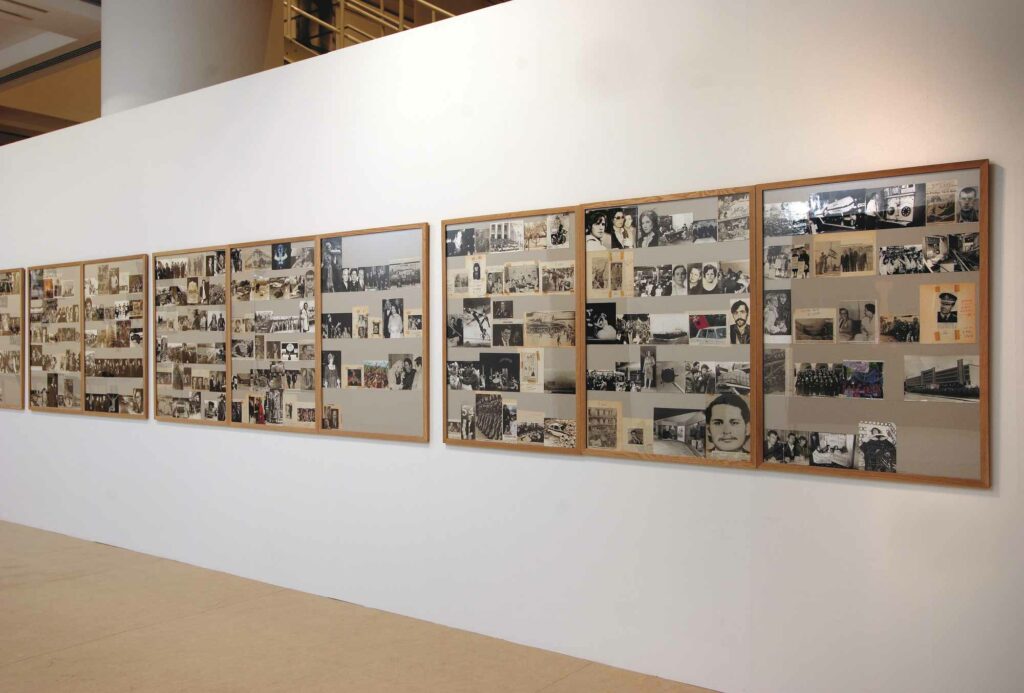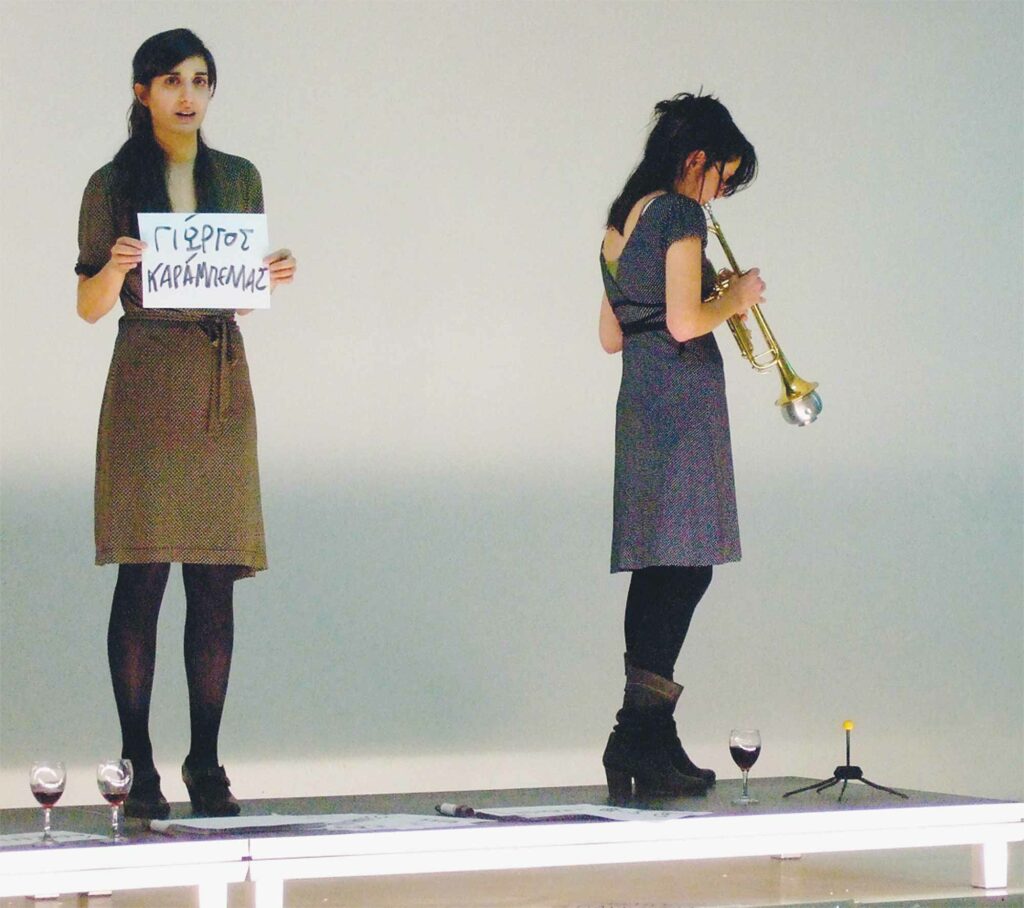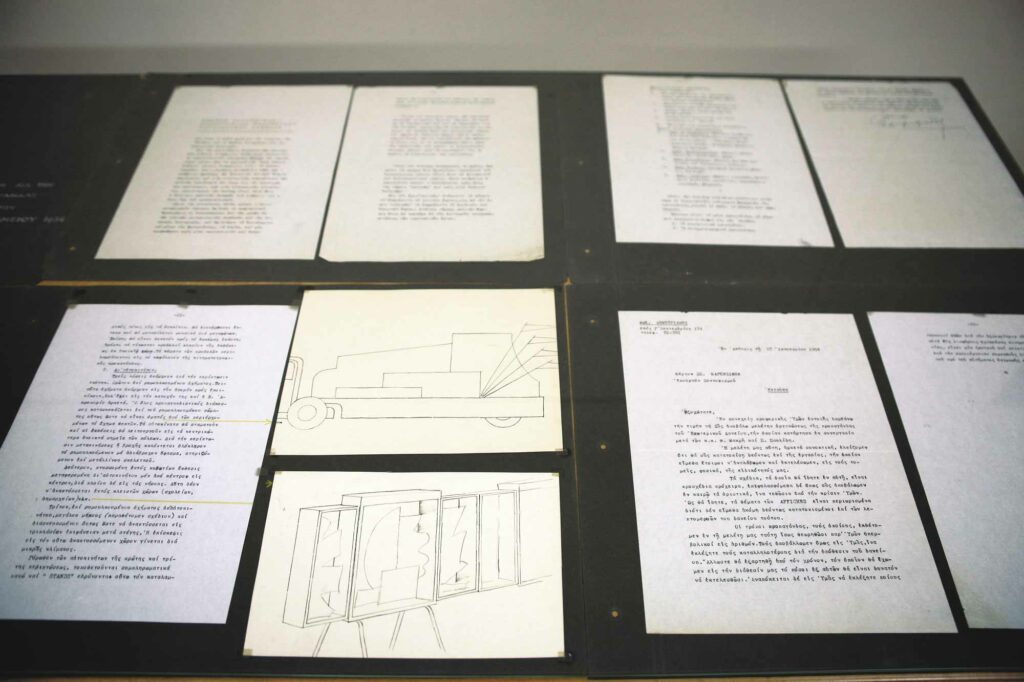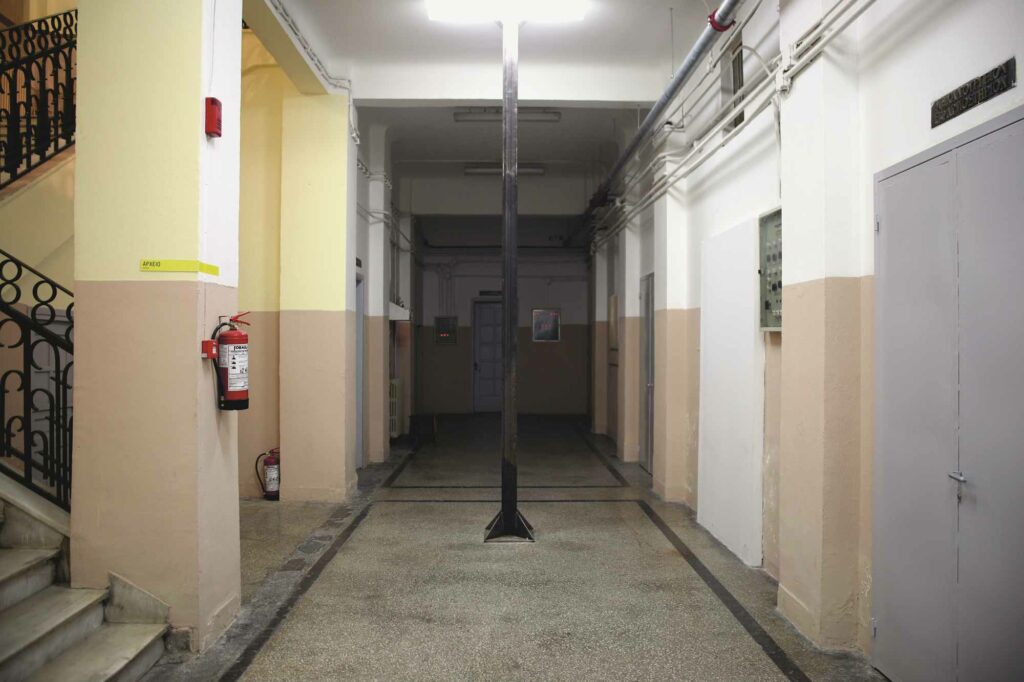The above question, posed eight years ago in the editorial of the first issue of Local Folk, a free publication where I was co-editor together with the artist Vangelis Vlahos, seems relevant once again — though this time in a different context. Back then it questioned the hype accompanying the reception of the contemporary Greek art scene abroad in the midst of the Olympics (mainly due to the development of a number of important collectors operating at the global level, and the emergence of a new generation of galleries). Now it reflects the attention that Greece receives because of the economic crisis and the social unrest. After the widespread riots of 2008 some of the most important global theorists (Slavoj Žižek, Jacques Rancière, and Alain Badiou) came to Athens to give talks and provide an analysis, arguing that Greece is one of the most interesting countries today because it reconsiders key questions about the operation of politics. Although in the past, foreign and local art critics had never used to approach the Greek art production in a wider sociopolitical context, they are now, however, trying to capitalize the context of the crisis filtering every exhibition taking place in Greece through the specific prism of the crisis resulting in a superficial reading. However, it is too soon to trace the impact of the crisis on the local art scene although certain signs of decline and fatigue are beginning to mark the end of an era.
The formation of the local art scene in the last decade was characterized by the leading role of commercial galleries as a substitute due to the lack of formal institutions and independent initiatives. Drawing, crafts-based work, large sculptural installations, and graffiti were the main canon, while the similarities between the dominant aesthetic and that of the Dakis Joannou Collection (whose foundation, DESTE, was for many years the main window to the global art world) and galleries such as the Deitch Projects or Peres Projects in Berlin were not negligible. Research-based and interdisciplinary projects renegotiating the historical legacy and the local sociopolitical reality, which were common in neighboring countries of the so-called periphery, were rare in Athens. Given that in Greece there is not a tradition in an interest in the social sciences—due in part to the turbulent political past, which did not provide the openness needed for their development — art criticism is limited to the standard formalistic analysis, as critics and theorists did not provide any alternative. Further, the lack of interdisciplinary approaches in art education, which is still anachronistic and crafts-oriented in many cases, and the art impresarios’ focus on the establishment of structures which would facilitate the exportation of the scene abroad rather than on creating a discourse on the identity of the scene itself.
The local art production and attitude in the last decade seemed to reflect the ideology of a country eager to modernize itself and leave behind the charged political conflicts of the past and move towards normality, represented in a Western European model of administration which created the illusion of being a part of the center of the decision-making process. In the sociopolitical context of the democracy of the market — of today’s capitalism — where politics have put an end to any ideological collisions and have become a managerial tool, it is no surprise that few artists were interested in re-examining recent Greek history and legacy.
Few exceptions confirm the rule. In recent history and more specifically in Greece in the eighties—starting from the period called Metapolitefsi— the years after the fall of the junta in 1974 and the formation of the first socialist government, in which the slogan “Allagi” (change) incarnated the promise of a new society, have provided a study field for a few artists.

A project entitled 1981 (Allagi) (2007) by Vangelis Vlahos (fig. 1), an artist who has continually illuminated sidelined aspects of the local history, attempted to construct a reading of the first nine months of the Greek Socialist Party’s administration in the early nineteen-eighties utilizing visual material found in the archive of the right wing Greek political newspaper Eleftheros Kosmos (Free World). The publication entitled Greece in the ’80s, edited by Vassilis Vamvakas and Panagis Panagiotopoulos, adopting the form of the dictionary, brought together contributions from the political, social, and cultural field, creating a narrative of Greek society based on lived experiences rather than strict historical research. Metapolitefsi (2012) (fig. 5), a dance performance directed by emerging choreographer Mega Menti, focused on the points at which the personal experience merges with the political: the moments when history is inscribed in the body, and the moment when the actions of the individual create history, not in the heroic sense, but in the mundane everyday sense. Menti attempts to retrace the body’s memories of the polarized Greek society of the eighties, such as the intense experience of waving the flag of a political party. Another idiosyn- cratic exploration of the recent past was attempted by Galaxias (2011) (fig. 2), a theatrical performance by the Blitz Theatre Group that resembled a Dadaistic game composed by free connotations, like a parade of dead heroes and anti-heroes, but of “dead” objects as well as ideas, movements, and phrases. Yota Ioannidou’s “Stratagem” (2009) is a research project and lecture performance focusing on the relocation of the production facilities of corporate companies in different Eastern European countries, utilizing— as a point of reference—the paradigm of the factory of the former Greek underwear manufacturer, Palco. Ioannidou’s new project Restage Radio_A (2011) focuses on the collection of evidence through stories and archival material from the broadcasts of the radio station “Solidarity,” created by the redundant staff of Piraiki-Patraiki during the occupation of the factory in Patras in nineteen-ninety—where it became a center of resistance against mass layoffs and reduction plans. A more indirect comment on the way in which contemporary Greek identity is shaped comes from the films of the so-called “new Greek wave,” referring mainly to Giorgos Lanthimos and Athina Rachel Tsangari. Although time and place is blurred, hints on the incomplete utopia of Greek modernism and the particularity of a pathogenic, family-run nation, provide a local context.


While the aforementioned projects do not respond directly to the current situation neither do they coincide chronologically with the recession, the financial crisis was the leitmotif at the 3rd Athens Biennial Monodrome (2011), curated by Xenia Kalpaktsoglou, Poka-Yio, and Nicolas Bourriaud (figs. 3 and 6). Despite the melodramatic and descriptive tone of certain curatorial choices, it provided an alternative space to consider the current situation away from the supposedly rational, yet highly ideological, dominant discourse as concerns the crisis that is promoted through the media.


After the onset of the crisis, we are witnessing two contradictory readings of the Metapolitefsi. The same period, which until recently was considered a positive move towards democracy (such as establishing the welfare state, and raising the living standards), is now blamed for all the ills of Greek society from 1974 onwards (corruption, populism). This is a new reading of recent history that rewards negative judgments, calling into question even those aspects of society that until recently were considered achieve- ments. These developments, according to the historic magazine historein, which recently organized a symposium to call for the need to study the period of Metapolitefsi beyond the stereotypical criticisms and hegemonic narratives proposed by the present crisis in the context of a broader reflection on our recent history.
Parallel to the empirical judgments that have lead to the dominant simplistic arguments which try to explain the current local crisis either as a Greek problem or as a fault of the foreigners, Greek historian Antonis Liakos argues for the need to use the methods of comparative history considering that Greece, or any other society for that matter, is not an isolated organism.1 Perhaps the idea to study the Greek crisis as a trans- national phenomenon, leaving behind the descriptive models based on national singularities, would be equally useful in the understanding of the local art production.
The aged arguments of the so-called Greek singularity (its borderline character, its suspension between East and West, archaic, and modern etc.) covering the contemporary art production with a veil of something, which cannot be explained, may no longer be beneficial. The myths of previous artistic generations—mainly the generation of the nineteen-thirties—still haunt the critical discourse, and contemporary writers and curators often resort to the metaphysical sphere in order to talk about what is happening now. The emphasis on the idiorythmic, individualistic, surreal, and sublime characteristics of contemporary Greek art can be linked to the nostalgic and conservative global call for the return to aesthetics, and in particular the experience of the beautiful, as a reaction to the growing impact of political discourse in contemporary art exhibitions in the last fifteen years. Time will tell whether the current state of exception will provide a change in mentality in the local art world and possibly result in a re-contextualizing of the historical legacy or whether the expectation of a return to normality will instead prevail.
1 Antonis Liakos, “Five Paragraphs on the Crisis,” historein (blog), January 20, 2011, www.historein.gr/2011/01/blog-post.html (accessed April 21, 2011).